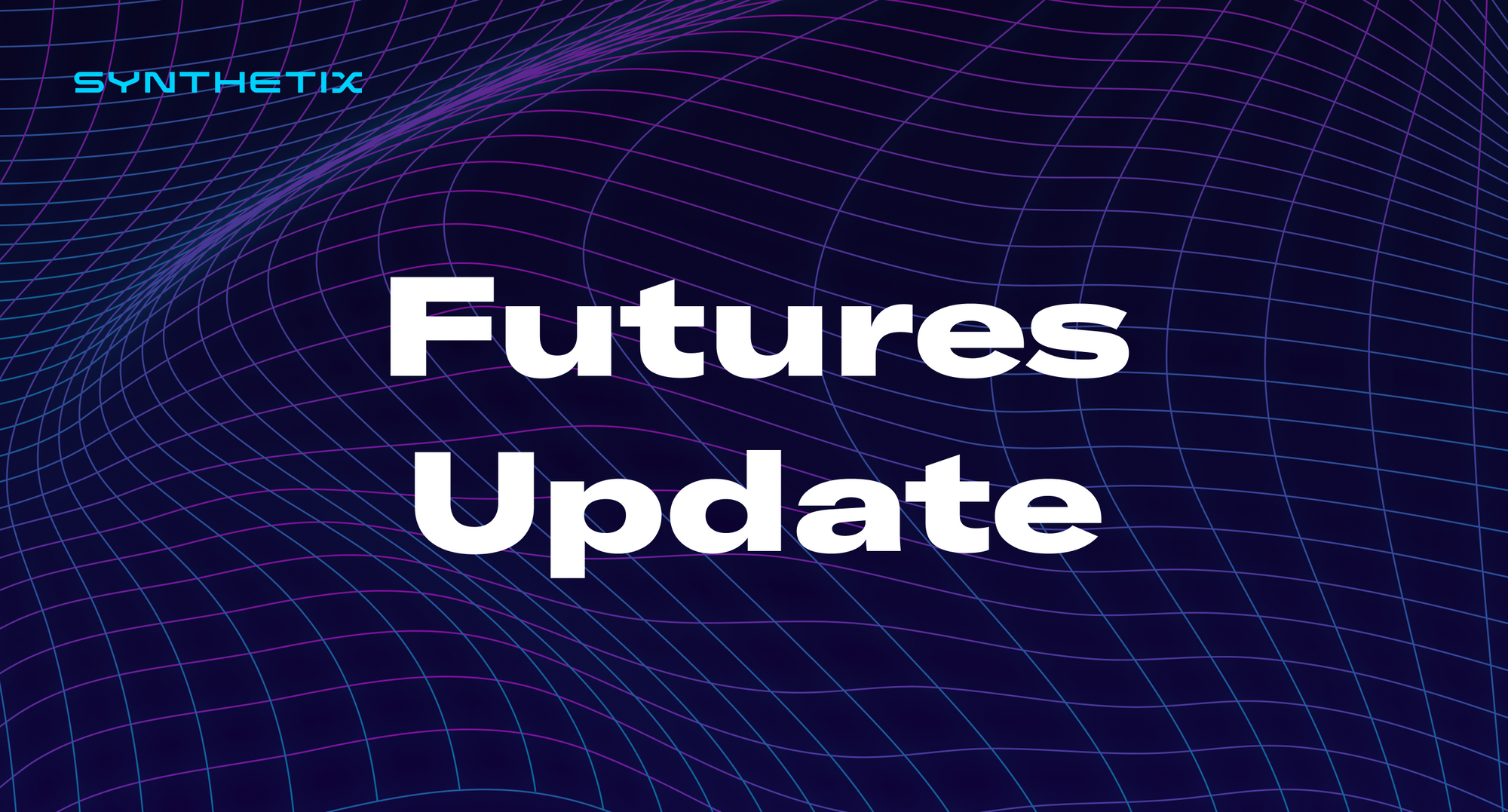Futures Update

Ever since our transition to Optimistic Ethereum (OΞ) kicked off earlier this year, we have been working towards our goal of launching the most liquid, fully on-chain perpetual futures platform in DeFi. Much progress has been made and numerous lessons learned, culminating in a Kwenta testnet competition held in October.
Overall, the testnet competition was a great success. The futures market functioned as intended, and also highlighted some opportunities to enhance the usability and efficiency of the platform without adding too much additional scope. This post is intended to provide context on the work that remains before mainnet as well as some approximate timelines.
Before we dive into the details, it might be useful to briefly review the design of Synthetix’s perpetual futures. Like other markets on Synthetix, futures markets will offer deep liquidity concentrated at the current spot price. This is facilitated by Chainlink’s tamper-proof decentralized price feeds, as well as SNX stakers who guarantee trades made through the platform.
Offering deep liquidity at the market price provides a great UX for traders and dramatically better capital efficiency for stakers, but also exposes stakers to risks from frontrunners trading ahead of price updates to earn risk-free profit at their expense. To date, this challenge has been difficult to fully address (see here for more detail).
First and foremost, the transition to L2 has greatly improved the frontrunning situation for Synthetix. The scalability offered by OΞ enables Chainlink oracles to push updates much more frequently in a cost-effective way, thus allowing for spot synth exchanges with no fee reclamation and negligible frontrunning risk (with 40bp fees).
One of the takeaways from the testnet competition was that frontrunning still poses a legitimate risk on L2 if Synthetix is going to offer low fees for perpetual futures. This prompted the introduction of SIP-184, which dynamically adjusts exchange fees in response to price instability. With SIP-184 as a backstop against volatility, base exchange fees can be safely lowered. Research done as part of SIP-184 suggests that ~20bp exchange fees could be feasible, with the dynamic fee only kicking in ~1% of the time. Note that this is just an initial target, and further improvements are likely to support even lower exchange fees.
The other main differentiator of Synthetix perpetual futures compared to other platforms is the role of funding payments. Traditionally, funding payments are used to align the futures market price with the spot price. Because trades on Synthetix are executed at the current oracle price, there is no need for such a mechanism. Instead, the funding rate is used to encourage balanced open interest and minimize directional risk incurred by SNX stakers.
Another useful takeaway from the testnet competition was that the funding rate curve used in Synthetix perps may result in higher funding costs than what users are accustomed to. It’s worth noting that due to the absence of economic incentives to arbitrage, funding rates observed in a testnet environment are not necessarily representative of what can be expected on mainnet. However, if there is an opportunity to make the funding rate curve less steep, and lower the cost of using the platform, it is worth pursuing.
This brings us to next-price orders which, as the name suggests, are trades that execute at whatever price is reported in the next oracle update after a trade is placed. Because orders fulfilled at the next price update are inherently difficult or impossible to frontrun, they can be filled with an extremely low exchange fee and minimal or no risk of frontrunning. Note that next-price orders will exist in parallel with traditional atomic exchanges, and that atomic exchanges with a slightly higher fee will always be offered.
The target user for next-price orders is predominantly arbitrage traders who will neutralize market skew to earn the funding rate (there will not be a UI for next-price orders initially). With lower exchange fees, these traders will be able to more efficiently neutralize even relatively small imbalances between long and short open interest. This will greatly reduce market risk passed onto stakers while also broadly lowering funding payments made by other traders on the platform. It is also expected that usage of next-price orders will decline over time as fees for atomic exchanges approach parity with next-price orders.
These two additions (SIP-184 and next-price orders) are relatively minor compared to the rest of the futures scope (outlined in SIP-80), but offer extremely significant benefits to users. Thus, the tradeoff of incorporating them in exchange for a slightly later launch date is well worth the effort. Currently, SIP-80 and SIP-184 are both code complete and under audit. The additional logic for next-price orders is in progress and close to being finalized. The next steps from there are testing SIP-184 on testnet (this week) to push fees as low as possible, then getting ready for mainnet with a target launch date in mid-January. The mainnet launch will be rolled out in several stages, gradually expanding maximum open interest caps as the effectiveness of the underlying mechanisms are validated.
It’s been a long journey, but the light at the end of the tunnel is now clearly visible. In a little over a month, Synthetix will deliver a fully on-chain composable perpetual futures market on the highly performant OΞ layer 2, with top tier UX and unparalleled liquidity. While it would have been ideal to launch futures before the end of the year, more sUSD liquidity is still needed on OΞ and by the time mainnet launches there should be a significantly higher amount of SNX staked on L2 reducing the risk for everyone staking on L2. With the upcoming Debt Pool Synthesis, we will also have much more sUSD liquidity to leverage for futures traders.
Futures mainnet will launch with three supported Synths (BTC, ETH and LINK). Discussions are currently underway between the Spartan Council and Chainlink to expand the number of supported synths which will allow for a more rapid rollout of futures markets following the launch.
Keep an eye out for more exciting updates in the coming weeks as we approach the main-net launch! As usual, if you've got any comments or questions please come join the conversation in Discord!

